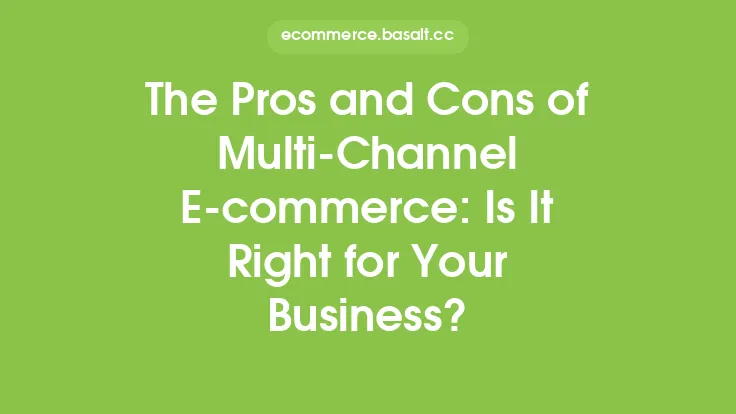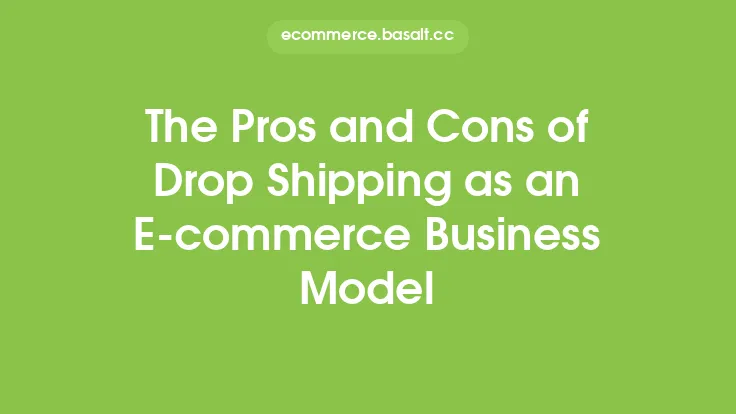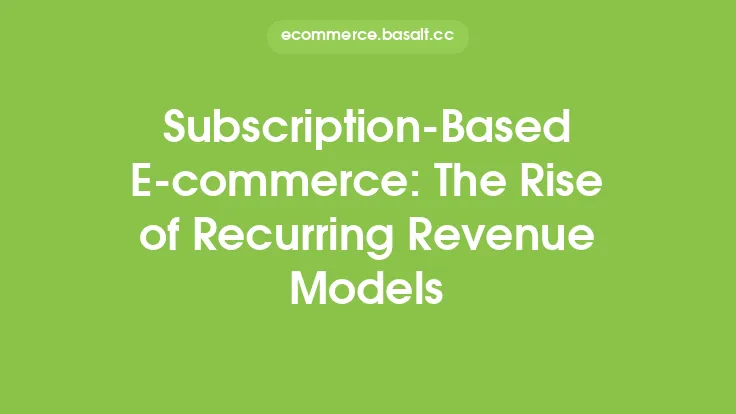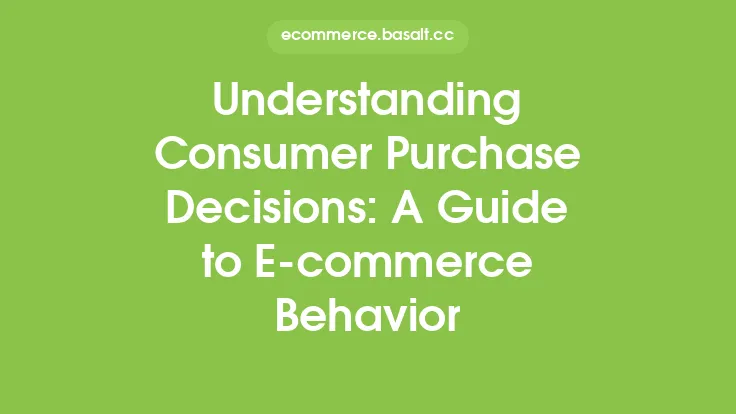The world of e-commerce has witnessed a significant shift in recent years, with the rise of subscription-based models revolutionizing the way businesses operate and interact with their customers. This approach has been successfully adopted by various companies, transforming the traditional one-time sales model into a recurring revenue stream. In this article, we will delve into the pros and cons of subscription-based e-commerce, explore success stories, and discuss the key factors that contribute to the success of this business model.
What is Subscription-Based E-commerce?
Subscription-based e-commerce refers to a business model where customers pay a recurring fee, usually on a monthly or yearly basis, to receive products or services. This model has gained popularity across various industries, including entertainment, software, and consumer goods. The subscription-based approach provides customers with a convenient and cost-effective way to access products or services, while businesses benefit from a predictable revenue stream and increased customer loyalty.
Pros of Subscription-Based E-commerce
The subscription-based model offers several advantages to businesses, including:
- Predictable revenue: With a recurring revenue stream, businesses can better forecast their income and make informed decisions about investments and resource allocation.
- Increased customer loyalty: Subscription-based models encourage customers to continue their subscription, leading to increased customer retention and loyalty.
- Improved customer engagement: Regular interactions with customers through subscription-based services help businesses build stronger relationships and gather valuable feedback.
- Competitive advantage: A well-executed subscription-based model can differentiate a business from its competitors and create a unique selling proposition.
- Data collection and analysis: Subscription-based models provide businesses with access to valuable customer data, which can be used to improve marketing strategies, product development, and customer experience.
Cons of Subscription-Based E-commerce
While subscription-based models offer several benefits, there are also some challenges and drawbacks to consider:
- High customer acquisition costs: Attracting new customers to a subscription-based service can be expensive, especially if the business relies on aggressive marketing tactics.
- Churn rate: If customers are not satisfied with the service or product, they may cancel their subscription, leading to a high churn rate and lost revenue.
- Pricing strategy: Determining the optimal pricing strategy for a subscription-based service can be complex, and businesses must balance revenue goals with customer affordability and perceived value.
- Customer expectations: Subscription-based models create high customer expectations, and businesses must deliver consistent value to maintain customer satisfaction and loyalty.
- Infrastructure and logistics: Managing a subscription-based service requires significant infrastructure and logistics investments, including payment processing, customer support, and inventory management.
Success Stories
Several companies have achieved remarkable success with subscription-based e-commerce models. Some notable examples include:
- Netflix: The streaming giant has revolutionized the entertainment industry with its subscription-based model, offering customers access to a vast library of content for a flat monthly fee.
- Amazon Prime: Amazon's subscription-based service provides customers with free shipping, streaming access, and other benefits, creating a loyal customer base and driving revenue growth.
- Dollar Shave Club: This subscription-based service disrupted the traditional razor market by offering affordable, convenient, and high-quality shaving products to customers on a monthly basis.
- Birchbox: This beauty and grooming subscription box service has successfully created a loyal customer base by offering personalized product recommendations and convenient access to new and exciting products.
Key Factors for Success
To succeed with a subscription-based e-commerce model, businesses must focus on the following key factors:
- Offer unique value: The subscription-based service must provide customers with unique value, whether it's convenience, exclusive content, or personalized recommendations.
- Develop a strong brand: A strong brand identity and customer engagement strategy are crucial for building customer loyalty and retention.
- Invest in customer support: Excellent customer support is essential for resolving issues, addressing customer concerns, and maintaining a positive customer experience.
- Continuously improve and innovate: Businesses must continuously monitor customer feedback, improve their services, and innovate to stay ahead of the competition and maintain customer interest.
- Optimize pricing and packaging: Businesses must carefully optimize their pricing and packaging strategies to balance revenue goals with customer affordability and perceived value.
Best Practices for Implementation
To implement a successful subscription-based e-commerce model, businesses should follow these best practices:
- Conduct thorough market research: Understand customer needs, preferences, and pain points to create a tailored subscription-based service.
- Develop a robust technology infrastructure: Invest in a scalable and secure technology infrastructure to manage subscription payments, customer data, and logistics.
- Create a seamless customer experience: Design a user-friendly interface, provide clear communication, and offer convenient payment options to ensure a positive customer experience.
- Monitor and analyze performance: Continuously track key performance indicators, such as customer acquisition costs, churn rate, and revenue growth, to optimize the subscription-based model.
- Foster a culture of innovation: Encourage a culture of innovation and experimentation within the organization to stay ahead of the competition and continuously improve the subscription-based service.
By understanding the pros and cons of subscription-based e-commerce, learning from success stories, and focusing on key factors for success, businesses can create a thriving subscription-based model that drives revenue growth, increases customer loyalty, and sets them apart from the competition.





